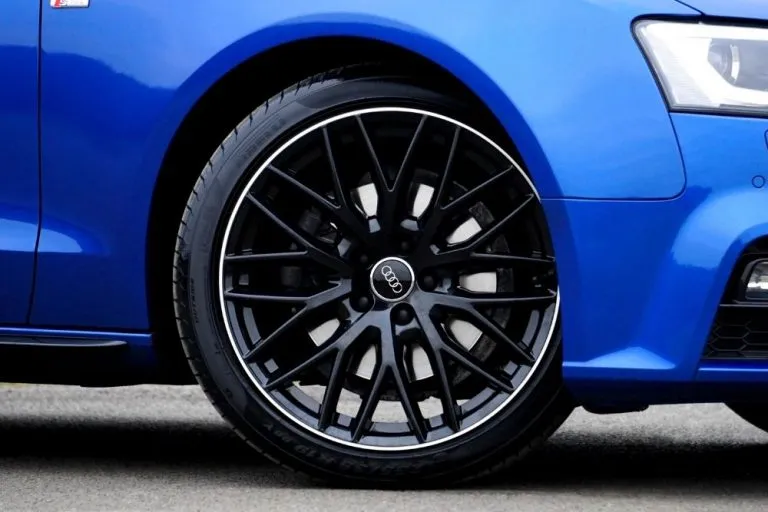What Does GTI Stand For? (Answered)
Chances are, you have been traveling on a road in recent times. If you have, then you have probably seen one of the most recognizable badges on the back and front of certain vehicles. This badge displays “GTI.”
You may have even been a passenger in a car that sports a GTI badge. But, do you know what GTI stands for? Well, you’re in the right place as we are going to discuss what this means, the origins of the GTI name, and much more in today’s article.
The term “GTI” has become synonymous with hot hatchbacks over the years. It has also been a status symbol for many vehicles for a few decades. If you are even the slightest bit interested in cars, then you probably know that GTI models of cars tend to be more powerful, are easier to handle, and are more exciting to drive.
Some famous examples of GTI motors include the Peugeot 205 GTI and, perhaps the most popular, Golf GTI. Both of these are fine examples of what GTIs can offer with improved performance and handling. Many manufacturers like to produce a high-performance model, even if the series of cars in that line are somewhat humble.
Some make sporty models while many go down the GTI route with their high-performance offerings. However, GTI cars have enjoyed impressive longevity and we’re pretty sure this will only continue.
But, you’re here to find out what GTI stands for. So, continue reading to discover the origin and meaning behind the acronym GTI so you can impress your motoring friends with your motoring knowledge when you see them next.
GTI: What does it stand for?
The term GTI seems to date back to 1960. The first use of it is thought to be credited to Maserati and its 3500 GTI. Maserati used the term GTI to shorten the words ‘Gran Turismo Iniezione.’ Translated into English, this means ‘Grand Touring Injection.’
When Grand Touring cars were first introduced, they were made to offer higher performance and similar handling to the sports cars of the day. These also combined the luggage space, comfort, and ability to travel long distances with ease.
Some famous examples of GTI cars of the past include the Ferrari 250 GTO, the Jaguar E-Type, and the Aston Martin DB5. These vehicles were usually front-engined and not mid-engined. This was to leave additional space for passengers and luggage. Comfort, style, and practicality – just what you want from a GTI or any car for that matter.
So, Grand Touring refers to the comfort and long distances that these cars were made to achieve. But, what does “injection” mean? Well, this part of the GTI name became known from the late 1950s when fuel injection was first introduced as a better alternative to carburetors. It began in the form of mechanical fuel injection on vehicles such as the Mercedes-Benz 300 L and, eventually, electronic fuel injection during the late 1960s.
This fuel injection helped boost power and efficiency and, of course, was used as a major selling point by manufacturers. Therefore, the letter “I” was added to “GT” models to showcase premium performance models.

GTI origin
We have already touched upon the first instance of the term GTI being used but let’s take a deeper look into its history.
As we mentioned, Grand Touring cars were becoming more and more popular during the late 1950s and 1960s. These GT cars were very popular in parts of Europe, especially Italy, where manufacturers such as Ferrari, Lancia, Maserati, and Alfa Romeo are produced.
Take the Lancia Aurelia GT of the 1950s for example. This epitomized the luxurious interior and comfort that became synonymous with GT cars of the time. These vehicles were also famous for their easy handling and powerful engines which were very popular with motorists. GT cars of the 1950s and 1960s could cruise effortlessly quickly but also perform very well on mountain passes and twisting country lanes.
One of the most famous and iconic Grand Touring cars is the Aston Martin DB5. Driven by Bond, James Bond during the 1960s, this became the beacon for what GT cars should strive to be.
Grand Tourers were made to easily fit yourself and your partner in the car along with your luggage. And, once you were on the road, these cars blasted along the relatively new highways throughout Europe. Whether you were traveling at high speeds or tackling more challenging, technical roads, Grand Tourers provided sports car-like handling for a wonderful driving experience.
As early fuel injection systems were introduced in the 1950s, the “injection” component became more familiar with manufacturers and drivers. This provided superior performance to the more traditional carburetors and, with ever-growing popularity, the “GTI” badge was born.
So, you’re probably wondering how GTI went from being associated with fuel-injected Grand Touring luxury vehicles to badges most associated with hot hatches such as Volkswagens. Well, Volkswagen helped to popularize the GTI over the years, even without making many Grand Touring vehicles along the way.
The first example of a MkI Golf GTI came about in 1976. This first Golf GTI is considered by many to be a follow-up to many of the GT cars of the 1950s and 1960s. By this, we mean it offered great performance and handling like sports cars of the day but still offered a great deal of space for passengers and their belongings.
Also, it was just as comfortable to drive as a standard car. Best of all, it was great value for money, especially compared to the more bespoke sports cars of the time. Therefore, the Golf GTI became a massive hit with motorists.
Other manufacturers soon followed suit with Peugeot producing a long line of popular GTI models such as the 205 GTI, the 106 GTI, and the 309 GTI. Other manufacturers that have also created GTI models over the years such as Toyota, Citroen, Nissan, Rover, Suzuki, and Proton. However, Volkswagen is perhaps the most synonymous with GTI models with examples such as the Lupo, Polo, and Up as well as the Golf.
In Summary
So, now you know! GTI simply stands for Grand Touring Injection which is translated from the original Italian of Gran Turismo Iniezione. At first, this simply referred to cars that were fuel-injected and offered higher performances than existing models.
Since Volkswagen introduced the GTI badge on their Mk1 Golf GTI in 1976, the name has stuck with certain hot hatch vehicles.
Now, all that’s left to do is impress your friends with your motoring knowledge and let them know all about GTIs and what the term means.





